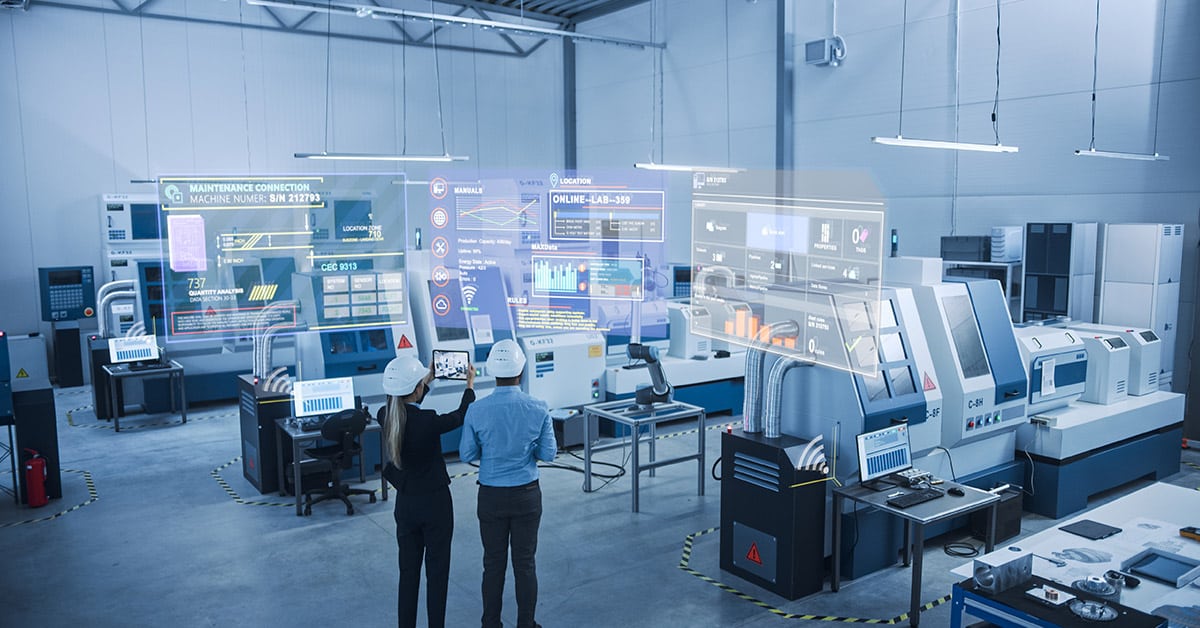Maintenance is a difficult activity to manage well. Equipment is increasingly complex and expectations for availability keep rising. At the same time, while more tools are available, utilizing them effectively requires a deeper and more diverse skillset.
Digital maintenance is a way to raise productivity and lower costs while improving effectiveness and meeting manufacturing demands. This blog explores the role of digital maintenance services and maintenance management within increasingly complex manufacturing operations.
The evolving landscape of industrial maintenance
Modern manufacturing processes require complex machinery. Sophisticated sensors, motors and pumps, along with advanced control systems, reduce product variability and drive down waste, but often need more maintenance support. Whereas scheduled lubrication services were once all that was needed, and occasional breakdowns were tolerated, today metrics such as OEE dictate a proactive approach to asset management.
Maintenance managers often use a combination of strategies, geared to the risk and consequences of breakdown. Run-to-failure may still be acceptable in some areas — but for most production machinery, a move is underway from preventive to predictive maintenance. This requires a higher level of knowledge about asset condition, plus advanced analytics capabilities to make sense of the data available.
In parallel, managers are experiencing greater pressure to meet financial targets, especially in terms of inventories and labor. MRO costs are under the microscope and training is of growing importance, all against a background of increasing requirements for regulatory compliance.
Importance of transitioning to digital solutions
Increasing demands and complexity have led to a plethora of tools and solutions. These are used for tasks such as tracking spare parts inventories, procurement functions and recording inspections. Some of these are home-grown, often spreadsheet-based, while others are purchased and possibly supported externally.
This creates inefficiency and waste. Effort is duplicated in some areas while essential tasks “fall between the cracks.” Costs are too high while the maintenance impact — measured by OEE, MTBF and other metrics — is less than desired or expected.
Digital work management provides a solution. Rather than disparate systems with incompatible, and often inaccessible, data, a digital maintenance system links every aspect of asset management from procurement to disposition and including labor and inventory management.
What is digital maintenance?
The goal of digital maintenance management is to consolidate and streamline the separate databases and workflows that grow over time. A digital maintenance system provides a single source of truth for those involved with asset management — whether from financial, operational, labor or even quality perspectives.
Two software products or tools are at the heart of digital industrial maintenance: a computerized maintenance management system (CMMS) and an enterprise asset management (EAM) platform.
A CMMS handles work order creation and more. It implements the maintenance strategies developed for each piece of equipment, so maintains records of work needed and done. It may provide spare parts and MRO inventory management capabilities. Systems can also handle labor scheduling, keep records of skills and training, and link to HR systems.
A modern CMMS may have advanced analytical capabilities enabling it to recommend maintenance work based on condition rather than on a calendar or an hours-run basis.
EAM complements the CMMS. It’s about maintaining a record of all the equipment on a site, or on multiple sites. For every asset, it tracks location, costs, condition and work done, (repairs, scheduled maintenance and upgrades). It links to the CMMS to track work orders and is used by finance to maintain asset values and log depreciation. EAM also covers environmental compliance by tracking chemicals and other hazards associated with specific pieces of equipment.
Used together, EAM and a CMMS can digitize the maintenance workflow — from equipment, spare parts and consumables purchasing to installation, repair, rebuild and eventual disposition.
Benefits of digital maintenance
A digital maintenance workflow streamlines and simplifies asset management. For an industrial or manufacturing business, this means:
- Less work: Implementing effective maintenance strategies becomes easier when all the information is in one place.
- Less waste: Duplication of effort is prevented when everyone has access to the same records and data.
- Improved compliance: Records of required tests and inspections are easier to access. Plus, they can be scheduled far in advance, with the calendar being adjusted quickly as requirements and equipment change.
- Higher maintenance productivity: Better planning and parts management means fewer repeat visits to complete work orders.
- Less planned downtime: A digital system supports predictive maintenance strategies that reduce the amount of preventive work performed.
- Better inventory management: Both MRO and spare parts stocks are better controlled by having accurate records and data. Plus, disposition via an EAM platform initiates disposal of spare parts that are no longer needed.
Key features of digital maintenance
Every implementation of digital maintenance is driven by the unique needs of the business. However, there are some common features:
- Asset management and MRO: The system has tools for capturing asset histories and linking these to spare parts usage and inventories. Digital MRO, a core component of industrial asset management, supports management of the materials, tools and consumables used throughout the maintenance function.
- Automation: The CMMS can generate work orders and initiate procurement when needed, and without human intervention.
- Digital scheduling and planning: The CMMS determines when work is needed, either following a preventive maintenance schedule or as identified by a predictive maintenance system. Labor scheduling, compliance testing and inspection can be scheduled the same way.
- Work Order management: The CMS issues orders to the appropriate individuals or teams. It can also track completion so management can apply metrics such as percentage of orders completed on first visit and on-time/as-scheduled completions.
- Predictive analytics and condition monitoring: The modern CMMS can analyze machine data gathered by condition-based monitoring to determine when inspections and repair work is needed to prevent failure. Increasingly, this analytics function is performed by AI, either on-premises or in the cloud.
- Mobile accessibility: The ability to access and update work orders, work history and spare parts inventories while at the machine boosts technician productivity by speeding up troubleshooting and reducing the number of trips needed to the office and/or stores.
- Integration with existing systems: True digital maintenance is linked with the ERP and HR systems for immediate information on equipment status and to keep personnel training records current. It should also link to any systems used for environmental and health and safety compliance.
Implementing digital maintenance in your operations
Implementation depends on the maturity level of the maintenance practices and systems already in place. However, most businesses will want to address the following steps:
1. Create a vision of the future maintenance function. How will it operate and what service levels will be targeted?
2. Recognize the effort will be focused on two streams: digital work management and predictive maintenance.
3. For digitization, determine the current flows, then evaluate the changes needed to implement a digital solution. (Changing existing practices is usually more successful than modifying the functionality of complex computer programs.)
4. For predictive maintenance, establish a scope and goals. Then look at what data is already available and determine where more will be needed. Evaluate machine monitoring technologies and select an optimal solution, along with the required analytics support.
5. Audit asset data to ensure it’s accurate before moving it to a new system. Make any necessary changes to data collection methods as part of the digitization process.
Implementation will be helped by following three principles:
- Involve the people who will be using and benefiting from the new system in its design and selection.
- Simplifying the ways in which people interact with the new system will encourage them to use it more.
- Find the right partners to support your digitization process.
ATS: Experts in industrial maintenance
As the leader in outsourced factory maintenance, ATS has the experience and knowledge to accelerate a manufacturer’s maintenance efforts and drive digital maintenance implementation.
Our services include:
- Predictive maintenance solutions (machine health monitoring and predictive analytics)
Contact us to discuss how we can help maximize asset availability and life while reducing waste and driving down costs.






